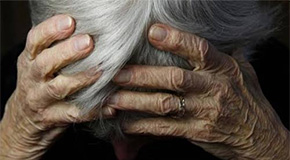Twenty-five years ago, domestic violence was referred to as a hidden crime. Any abuse occurring within the household was routinely considered to be that family’s dirty little secret. Slowly but surely, this ugly epidemic was outed by the national media. We stopped turning our heads when witnessing violence between husband and wife and intimate partners. The outcry against child abuse was even louder. Although domestic violence is now widely recognized to be a problem deemed worthy of attention in political campaigns and hearings at city hall, the victims are almost always portrayed as young adults. The elderly woman or gentleman who has endured decades of beatings at the hand of a spouse is rarely pictured. The older victims’ faces are missing, even though it’s rare for an abuser to change his or her behavior over time. It’s common knowledge that batterers are rarely “cured,” even after they’ve been prosecuted, ordered to attend an anger management program, or served a prison term. And the growing number of cases involving older relatives who are victimized by their own children often goes overlooked by activists and advocates, as well.
Today, instances of elder abuse are vastly unreported. And if domestic violence was once known as the hidden crime, the sad reality is that elder abuse wounds are often invisible. Injuries from physical assault may be obvious, but elder financial exploitation, emotional abuse and neglect may leave no visible scars, despite the fact that they cause great pain and suffering and have been shown to hasten premature death. Abusers are often the senior’s children, neighbors, bankers, agents under a power of attorney, home aides and other caregivers. Cases involving the victimization of older family members, and especially cases involving the theft of a victim’s life savings, are currently missing from most of our public awareness campaigns—despite the ever-increasing number of elderly victims.

